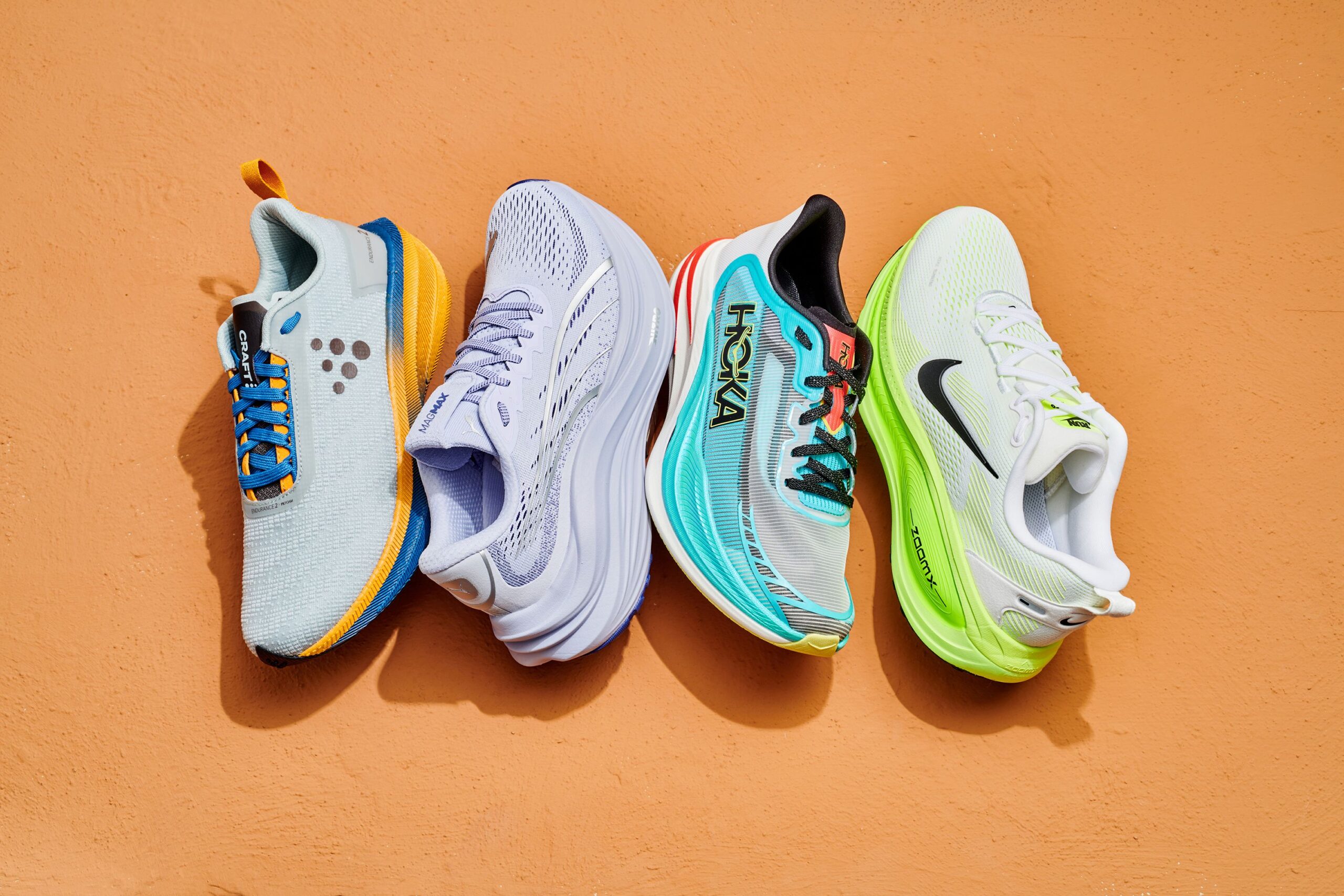Top Materials Used in High-Performance Men’s Athletic Shoes
The style of men’s athletic shoes has significantly changed over the years; the shoes now possess comfort, speed, and durability as their style factor. Each component of the shoes is built with high quality materials which now make shoes much easier to run while enhancing your stamina. Whether you are a fitness enthusiast, a basketball player, or a casual walker, the right shoes for your fitness goals are now a crucial factor to make you enjoy your activities. As much as athletic shoes for men matters, the materials they use is also an important aspect to consider.
In the following text, we study the top materials used in high-performance men’s athletic shoes and identify what factors differentiate them while providing tactical assistance.
Upper Materials – The Fit and The Structure
The upper of an athletic shoe has a vital responsibility over the fit, flexibility, and vital factors like breathability. Modern athletic shoes from Voghion are made with advanced uppers which are a blend of comfort and soft material.
Engineered Mesh
Unlike traditional mesh, engineered mesh is one of the most popular material choices for high-performance athletic shoes. While being versatile to strengthen the breath of air, the strategic design also upholds stability with a balanced fit.
Advantages: Adaptable fit, breathable, and lightweight.
Best For: Running and training shoes, along with sports that involve quick lateral movements.
Flyknit and Primeknit Uppers
Adidas and Nike, along with other players in the footwear industry, have knitted uppers that offer flexibility and structure. Flyknit and Primeknit materials embrace the foot gently and are often compared to socks.
Advantages: No seams for irritation, reduced weight, and adaptive fit.
Best For: Casual running, gym workouts, and athleisure.
Synthetic Leather
Athletic shoes are often seen as heavy because of the use of genuine leather, however, synthetic leather has its advantages. It is often used in basketball shoes and other indoor court sports as it provides lateral support.
Advantages: Supportive, easy to clean, and durable.
Best For: Cross-training sneakers, turf shoes, and basketball shoes.
The Midsole’s Use of Different Materials
The midsole is the center of power for an athletic shoe as it absorbs the shocks, provides cushioning, and enhances energy return. Athletes are always looking for better performance footwear that caters to their needs, and this is the section where the majority of the changes are made.
EVO (Ethylene-Vinyl Acetate) Foam
EVA foam is used in the athletic shoe’s midsole for its cushioning and light weight features. It has been the standard feature for decades, and this is because with the advancements made in the technology used for EVA, the energy return and compression resistance has increased as well.
Advantages: Light-weight, cushioned, and responsive.
Best For: Walking, and running as an everyday training shoe.
TPU (Thermoplastic Polyurethane) Foams
TPU-based mid soles like Adidas’ BOOST technology have changed athletic footwear. The midsole’s bouncy, yet durable, and long lasting performance comes from the forever rich fusing of TPU beads.
Advantages: Excellent temperature resistance, long lasting cushioning, and high energy return.
Best For: Long-distance runs, high-impact sports, and casual use.
Other High performance Polymers
With the added flexibility and stiff energy return, the lightweight elastomer, Pebax, is used in elite racing shoes.
Best For: Competitive and sprint running as well as track events.
Advantages: Stiff for propulsion, feather light weight, and unusual energy return performance.
Outsole Materials: Durability, Grasp, and Traction
Contact the ground shoe part is the outsole, where biothane surface traction becomes important.
Durability of Carbon Rubber
The most durable midsole is carbon rubber as well as the most worn area like the heel for rest.
Best For: Road and trail running as well as the most used basketball sneakers.
Advantages: Great carbon rubber gives high traction with endurance.
Blown Rubber
Blown rubber is frequently used in the forefoot portion of shoes because it is lighter and more cushioned than carbon rubber. This material improves comfort and promotes flexibility.
Advantages. Lightweight, cushionic, and good grip.
Best For. Walking and running shoes, as well as court sneakers.
Continental® Rubber and Other Specialized Compounds
Some brands partner with tire companies to develop high-traction rubber compounds. For instance, continental® rubber is used in some running shoes for its superior wet and dry grip.
Advantages: Improved durability and superior traction in all conditions.
Best For: Performance running sneakers, and trail and hiking shoes.
Insole and Sockliner Materials: Comfortable, Tailored To You
Insoles and sockliners, while not as well known, are of great importance to comfort and provide adequate support.
Ortholite® Foam
insoles are well known for their breathable, cushioned, and antimicrobial features. These insoles keep shoes fresh for longer.
Advantages. Comfort, long-term cushioned support, and odor control.
Best For. Sneakers used in the gym, hiking boots, and casual shoes.
Memory Foam
Inscribed on the foot, memory foam shoes decorate the foot, giving one-of-a-kind comfort and cushioning.
Advantages. Soft touch and unique customization.
Best For. For casual and active uses, walking and gym shoes.
Balance and Support Materials
In activities like sports or exercises that involve heavy lifting, maintaining stability is important.
Thermoplastic Polyurethane (TPU) Shanks
TPU shanks offer stability and support in the midfoot region, which is important to maintain control and enhance explosive forward and upward movement.
Advantages: Restricts excessive inward twisting and adds physical structure.
Best For: Weightlifting sneakers and Tennis and Basketball shoes.
Carbon Fiber Plates
In the world of elite athletes, the introduction of carbon fiber plates has been revolutionary as they aid distance runners in reducing energy expenditure while providing forward lift.
Advantages: Lightweight stiffness, and propulsion assistance.
Best For: Elite competition footwear, sprint spikes, and marathon racing shoes.
Sustainable and Eco-Friendly Materials
Eco-friendly alternatives and sustainable practices are important in the world today, and brands like Voghion are at the forefront of the movement by using natural and recycled fibers, thus reducing the environmental shoe brands acrylic and artificial materials have.
Recycled Polyester
Recycled plastic bottles are one of the greatest ways to revamp an athlete’s look, making new products out of something that provides the same outcomes is the greatest change brands can make.
Advantages: Eco-friendly and durability to withstand wear and tear.
Best For: Athleisure wear, Training sneakers, and Running shoes.
Plant-Based Alternatives
Performance footwear is expanding to natural and eco-friendly options like sugarcane based foams and eucalyptus fibers that are used in the shoes. Advantages: Sustainable, renewable, and biodegradable.
Best For: Low-impact athletic footwear and casual sneakers.
Selecting the Best Material For Your Sport
Different athletic activities require specific materials. When buying men’s sports shoes, think about:
Running: A breathable upper made from lightweight mesh, with TPU or Pebax® midsoles, and carbon fiber plates for racing.
Basketball: Durable synthetic upper with TPU shanks and carbon rubber outsoles.
Gym/Training: Reinforced breathable mesh uppers, stable TPU midsoles, and Ortholite® insoles.
Trail Running: Rugged mesh upper, EVA midsoles, and high-traction rubber outsoles specialized for the sport.
What’s Next For Athletic Shoe Materials
Focus on the following for the next generation of high-performance men’s athletic shoes:
Smart Materials: Movement adaptive cushioning and embedded sensors.
Biodegradable Options: Products designed to decompose at the end of their life cycle.
Ultra Lightweight Composites: Materials that provide a competitive edge by being even lighter and stronger.
Final Thoughts
The performance of high – quality men’s athletic shoes hinges on the high-tech materials used. The uppers must be breathable, the midsoles should be energy-returning, and the outsoles must have high grip. Each of the materials is meant to enhance comfort, speed and durability of the shoe. Whether you are sprinting, dominating a game on the court, or working out, the proper combination of materials will improve performance and reduce injuries.
The items highlighted here will enable the user to make better decisions when choosing shoes that go with their outfit and pick their game.











